Kubernetes for the Absolute Beginners - Hands-on Tutorial
Kubernetes on the Cloud
Kubernetes on Azure AKS
In this guide, you'll learn how to provision a Kubernetes cluster using Azure Kubernetes Service (AKS) on Microsoft Azure. This step-by-step tutorial is designed for beginners and includes detailed instructions to help you get started quickly.
Prerequisites
Before you begin, ensure you have an active Azure account. If you’re new to Azure, take advantage of the 12-month free access and familiarize yourself with basic Azure configurations.
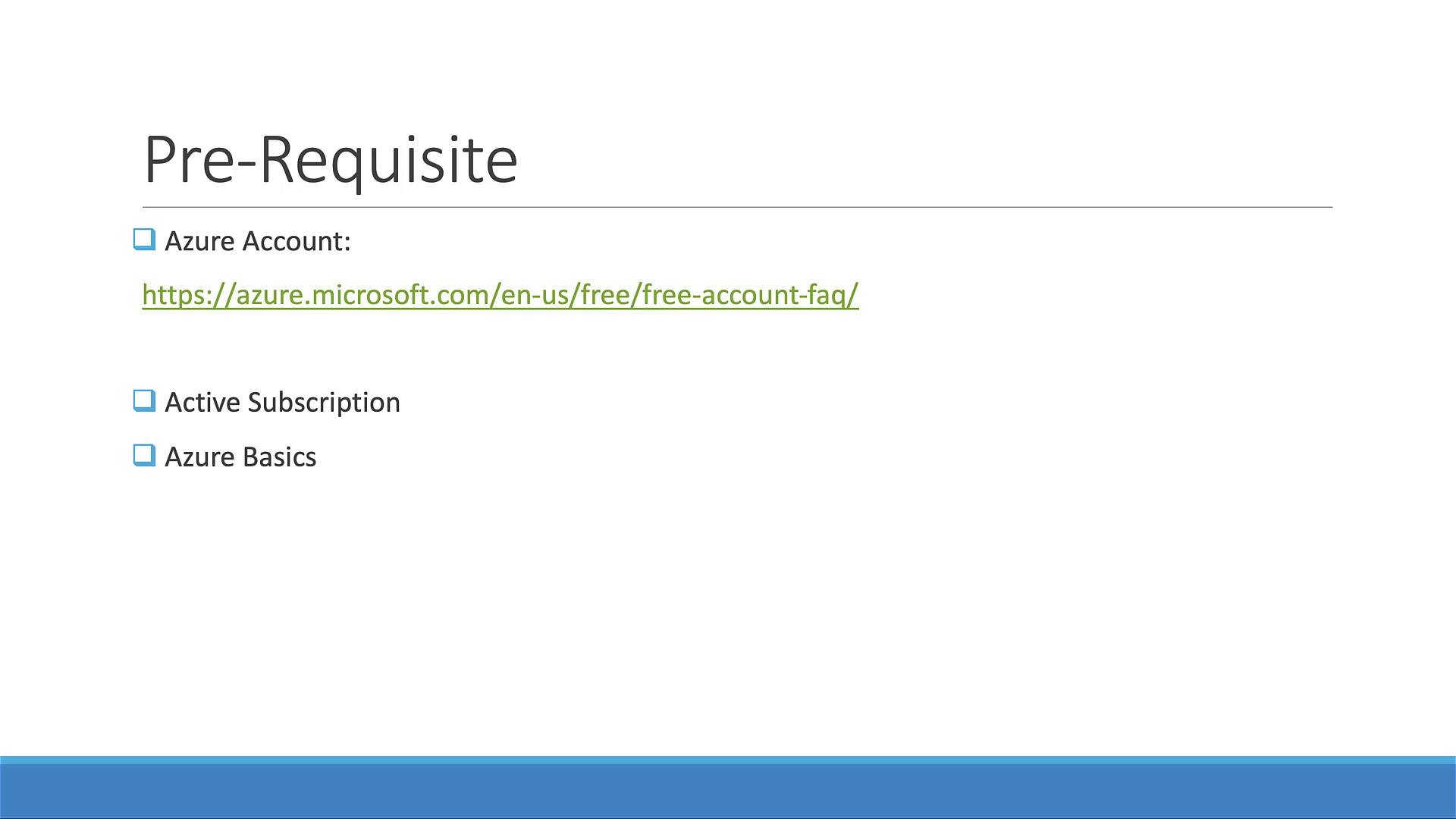
Accessing the Azure Dashboard
Once logged into your Azure account, you will be greeted with a dashboard displaying various services. In this demonstration, we are using the free "KodeKloud free account." To find the Azure Kubernetes Service (AKS), either search for "AKS" or select it directly from the available services list.
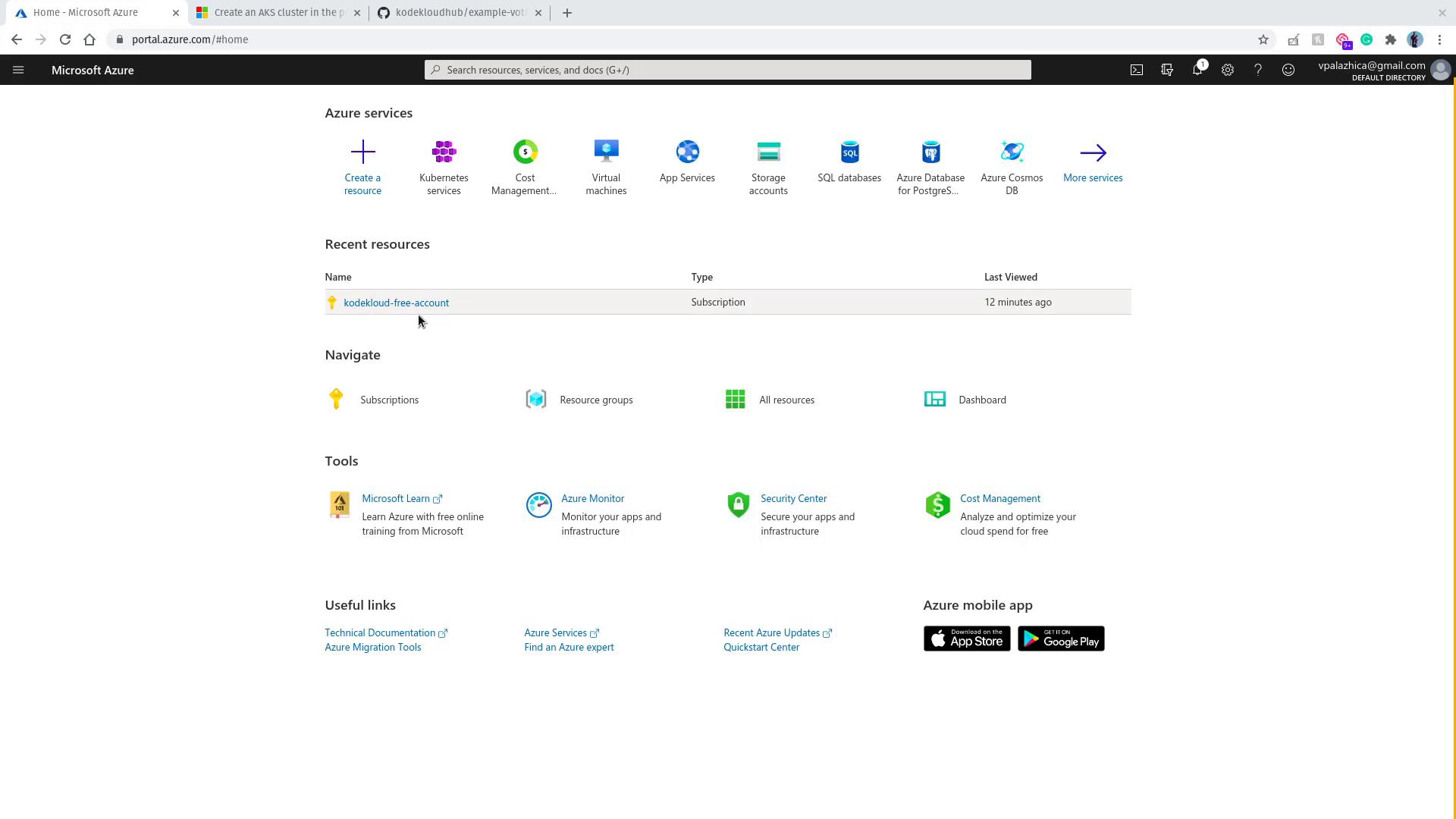
Creating Your Kubernetes Cluster
Since no cluster exists yet, you'll need to add a new cluster. This will take you to the "Create Kubernetes cluster" screen. Make sure that the appropriate subscription is selected, especially if you are using a free-tier subscription.
- Resource Group: Create a new resource group. For demonstration purposes, name it "voting app resource group".
- Cluster Name: Choose an identifiable name such as "example voting app".
- Kubernetes Version: Leave the default version (e.g., 1.16).
- Node Configuration: Considering this is a free-tier demonstration, select one node for the node size and leave the remaining options at their default values.
Under Authentication settings, select the option to create a new service principal. This service principal allows AKS to manage associated cloud resources seamlessly.
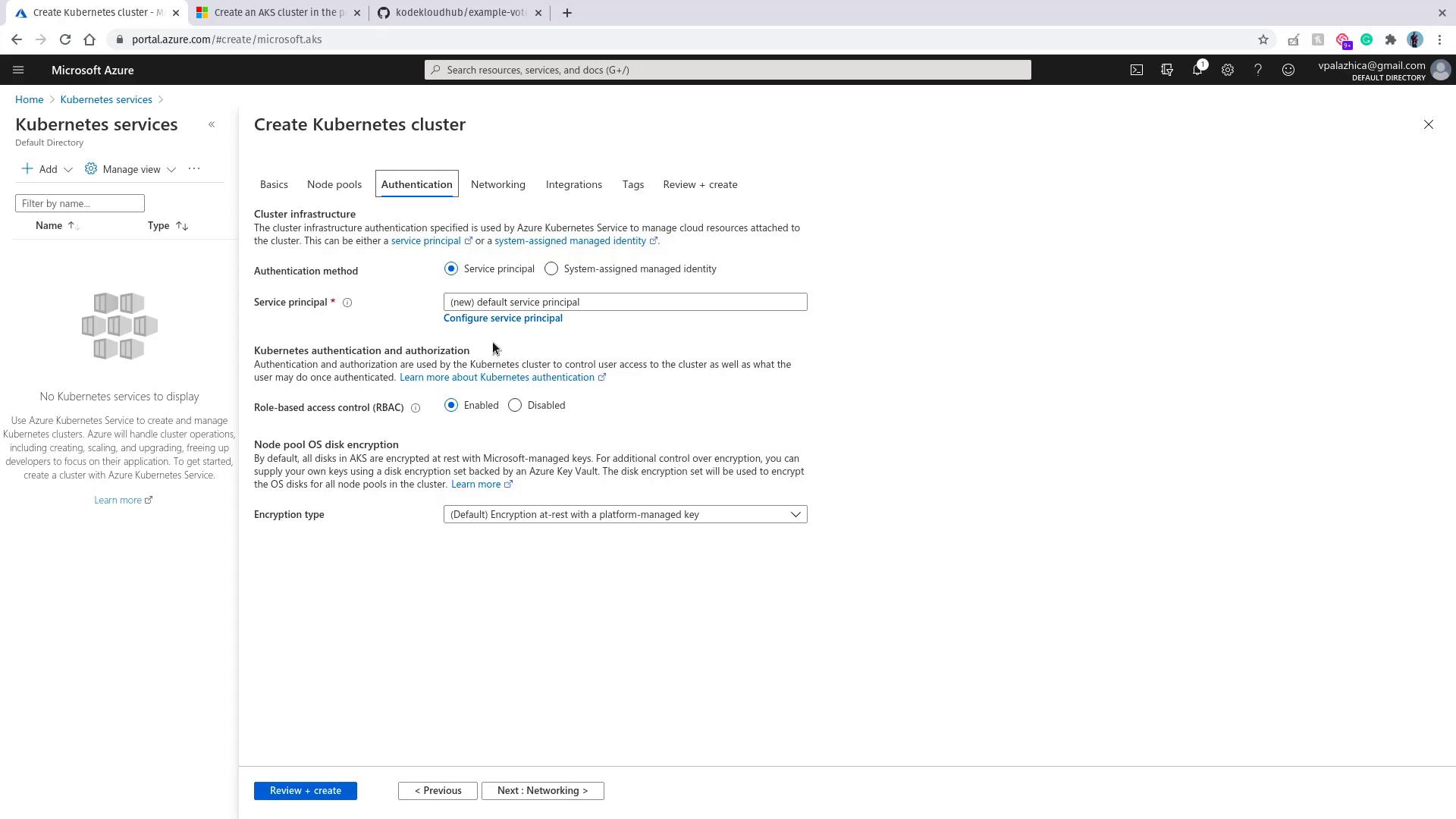
After verifying your configuration, click on Review and create. Once the Create button becomes available, click it to initiate the deployment. The process starts with provisioning your resource groups, followed by the creation of your Kubernetes cluster. Please be patient, as the full deployment might take some time.
Upon successful deployment, Azure will display a confirmation message.
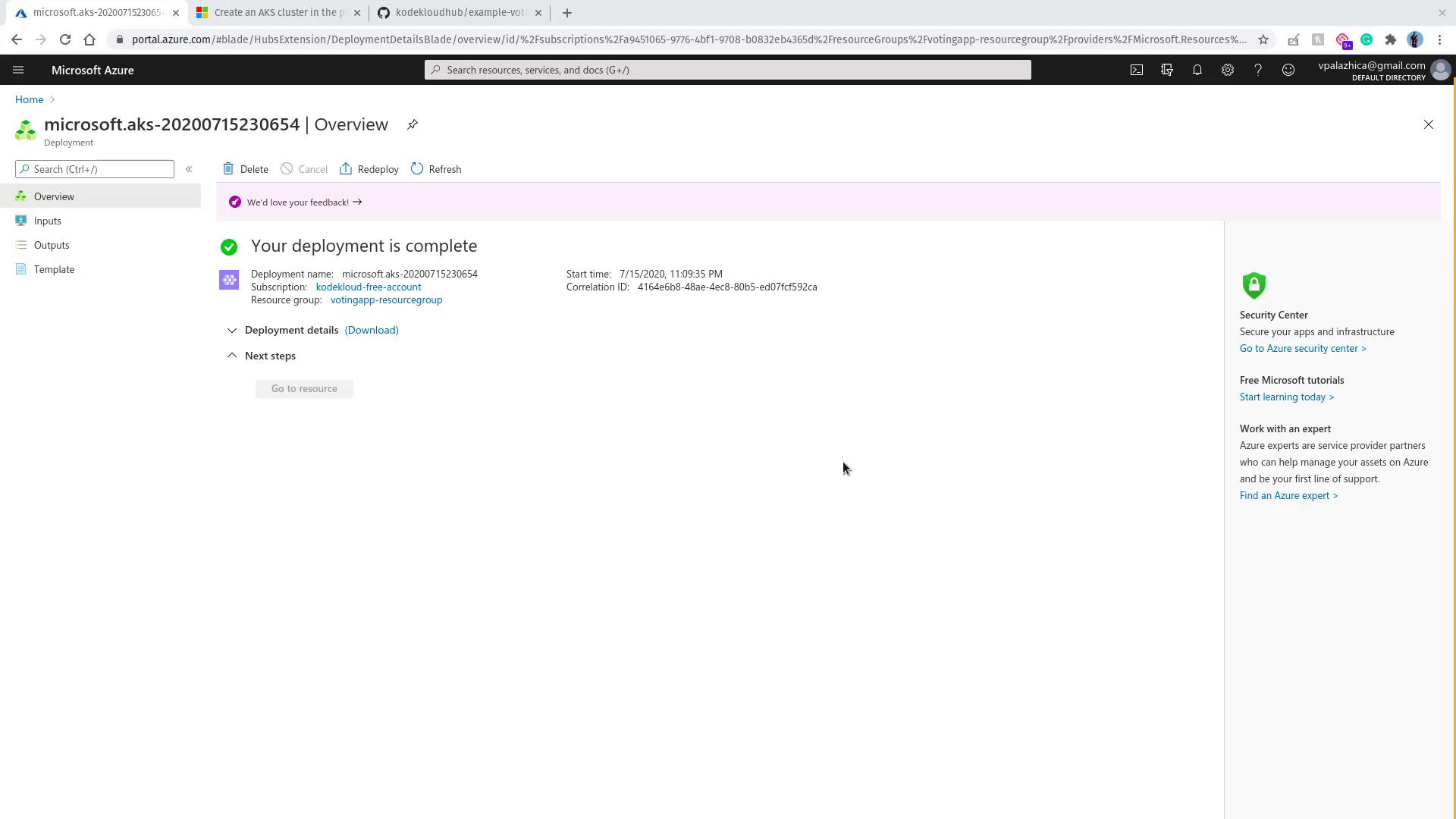
Connecting to Your Cluster with Azure Cloud Shell
To locate your newly created resources, enter "voting app" in the Azure search bar. You should see both the Kubernetes service and your cluster. Next, access your cluster using the Azure Cloud Shell, which appears at the bottom portion of the screen. If prompted, follow the steps to create storage for Cloud Shell.
While the Cloud Shell initializes, review these essential commands to connect to your AKS cluster:
az aks get-credentials --resource-group myResourceGroup --name myAKSCluster
kubectl get nodes
# Expected Output
NAME STATUS ROLES AGE VERSION
aks-agentpool-14693408-0 Ready agent 15m v1.11.5
Additionally, you might encounter a snippet in a Kubernetes configuration file like:
apiVersion: apps/v1
Scroll to the bottom of the documentation (if referenced) for further instructions on connecting to your cluster. The Azure Cloud Shell comes pre-installed with the kubectl client, so you can quickly grant access to your cluster.
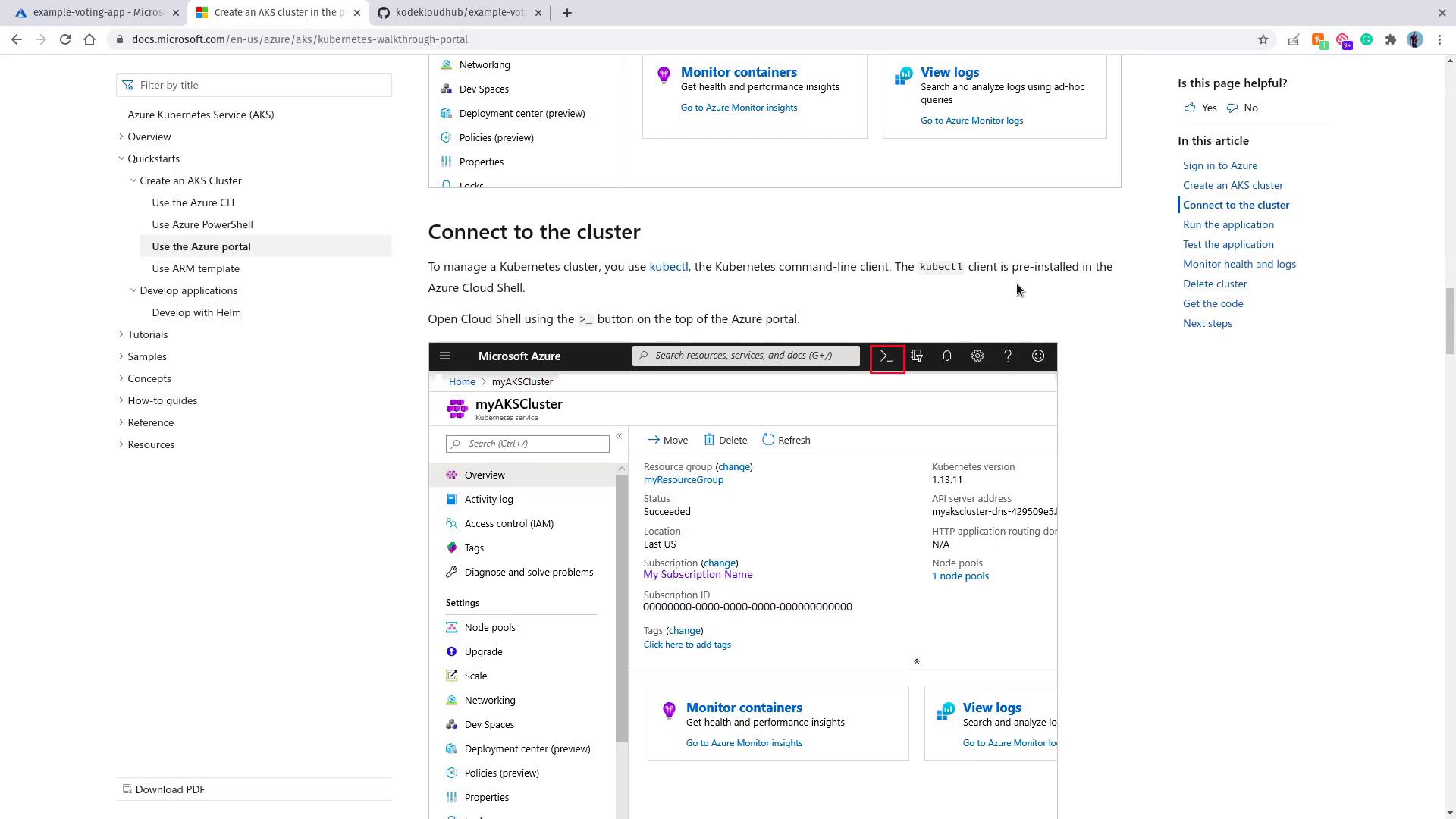
Configuring kubectl in Cloud Shell
In the Cloud Shell window, execute the following command to configure kubectl. Replace "myResourceGroup" and "myAKSCluster" with your actual resource group and cluster names:
az aks get-credentials --resource-group myResourceGroup --name myAKSCluster
After running the command, you will see messages similar to:
Your cloud drive has been created in:
Subscription ID: a9415065-9776-4bf1-9708-80832eb4365d
Resource group: cloud-shell-storage-eus
Storage account: cs21032002001aa74
File share: cs-vpalazhica-gmail-com-10032002001aa74
Initializing your account for Cloud Shell...
Requesting a Cloud Shell...Succeeded.
Connecting terminal...
Welcome to Azure Cloud Shell
Type "az" to use Azure CLI
Type "help" to learn about Cloud Shell
aed2c8b3-0ba6-4e8f-b3b3-630db5d6Azure:~$
After configuring, verify connectivity by running:
kubectl get nodes
For example, the output may appear as follows:
NAME STATUS ROLES AGE VERSION
aks-agentpool-29238863-vms00000 Ready agent 6m12s v1.16.10
Deploying the Voting Application
With your single-node cluster up and running, it’s time to deploy the voting application. Follow these steps:
Clone the Repository: Clone the GitHub repository containing the application's YAML files.
git clone https://github.com/kodekloudhub/example-voting-app.git cd example-voting-app/k8s-specifications/Deploy the Application Components: Execute the commands below in the order listed to deploy all necessary services and deployments:
kubectl create -f voting-app-deploy.yaml kubectl create -f voting-app-service.yaml kubectl create -f redis-deploy.yaml kubectl create -f redis-service.yaml kubectl create -f postgres-deploy.yaml kubectl create -f postgres-service.yaml kubectl create -f result-app-deploy.yaml # Deploys the result app if provided.Verify Deployments: Check the status of your deployments and services using:
kubectl get deployments,svcA typical output might be:
NAME READY UP-TO-DATE AVAILABLE AGE deployment.apps/postgres-deploy 1/1 1 1 96s deployment.apps/redis-deploy 1/1 1 1 104s deployment.apps/result-app-deploy 1/1 1 1 83s deployment.apps/voting-app-deploy 1/1 1 1 112s deployment.apps/worker-app-deploy 1/1 1 1 88s NAME TYPE CLUSTER-IP EXTERNAL-IP PORT(S) AGE service/db ClusterIP 10.0.43.213 <none> 5432/TCP 93s service/kubernetes ClusterIP 10.0.0.1 <none> 443/TCP 11m service/redis ClusterIP 10.0.180.53 <none> 6379/TCP 101s service/result-service LoadBalancer 10.1.1.176 52.152.245.94 80:30219/TCP 79s service/voting-service LoadBalancer 10.0.100.120 52.152.240.186 80:32245/TCP 109sLoad Balancer Notice
In some cases, the result app service may initially show a pending state while the load balancer is being provisioned. Give it a few minutes to complete this process.
Testing Your Deployment
Once all deployments are confirmed (each showing one out of one pod ready) and the load balancers for both the voting and result services have been provisioned, you can test the applications:
- Open your browser in a new tab to access the voting application using the external IP provided for the "voting-service".
- Similarly, open another tab to access the results application using the external IP of the "result-service".
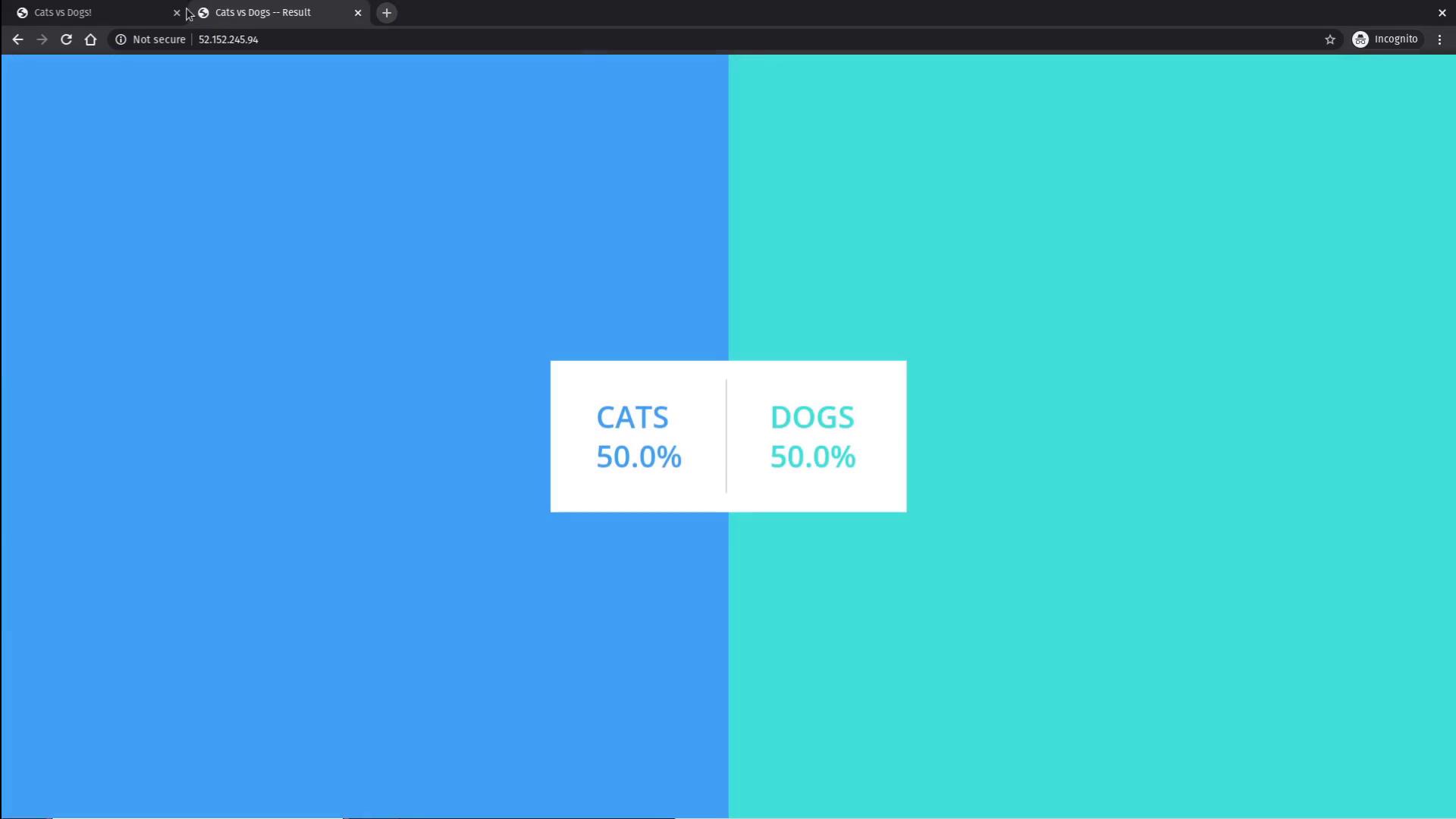
Vote on the application and watch the result update in real time. This confirms that the applications are functioning correctly.
Clean Up
After finishing your demonstration and learning session, remember to delete the cluster and clean up your resources to prevent any unexpected charges.
That concludes this Kubernetes on Azure AKS tutorial. Happy learning, and see you in the next guide!
Watch Video
Watch video content